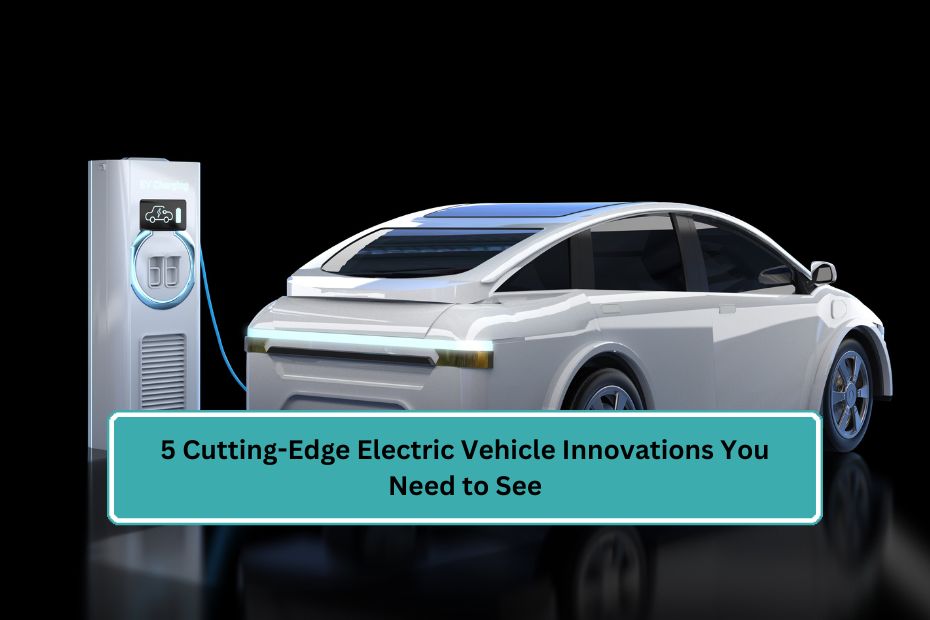Electric vehicles (EVs) have revolutionized the automotive industry, offering eco-friendly transportation solutions with reduced emissions and lower operating costs. As technology continues to evolve, the EV landscape is witnessing a surge in cutting-edge innovations aimed at enhancing performance, convenience, and sustainability. In this article, we’ll explore five groundbreaking innovations in the realm of electric vehicles that are reshaping the future of transportation.
1. Wireless Charging Technology
Gone are the days of cumbersome charging cables and plug-in stations. Wireless charging technology has emerged as a game-changer for EV owners, offering a convenient and hassle-free way to recharge their vehicles. Unlike traditional plug-in charging methods, wireless charging utilizes electromagnetic fields to transfer energy from a charging pad to the vehicle’s battery pack. This innovative technology not only eliminates the need for physical connectors but also reduces wear and tear on charging ports, ensuring longevity and reliability.
2. Solid-State Batteries
One of the most significant challenges facing the EV industry is the limited energy density and relatively slow charging times of conventional lithium-ion batteries. Solid-state batteries represent a revolutionary breakthrough in battery technology, offering higher energy density, faster charging capabilities, and enhanced safety compared to their liquid electrolyte counterparts. By replacing the flammable liquid electrolyte with a solid-state material, these batteries promise longer driving ranges and shorter charging times, making EVs more practical and appealing to consumers.
3. Autonomous Driving Features
The integration of autonomous driving technology has paved the way for safer, more efficient transportation systems. In the realm of electric vehicles, manufacturers are incorporating advanced driver-assistance systems (ADAS) and autonomous driving features to enhance the driving experience and improve road safety. From adaptive cruise control and lane-keeping assistance to fully autonomous driving modes, EVs are equipped with a range of intelligent features that help reduce driver fatigue and minimize the risk of accidents.
4. Vehicle-to-Grid (V2G) Integration
Vehicle-to-Grid (V2G) integration is revolutionizing the way we think about energy management and grid stability. By enabling bidirectional power flow between EVs and the electrical grid, V2G technology allows vehicles to serve as mobile energy storage units, balancing supply and demand in real-time. EV owners can leverage V2G integration to earn revenue by selling excess energy back to the grid during peak demand periods, while also contributing to a more resilient and sustainable energy infrastructure.
5. Augmented Reality (AR) Windshields
Imagine driving a car equipped with an augmented reality (AR) windshield that provides real-time navigation guidance, traffic updates, and safety alerts directly within your field of vision. AR windshields are poised to revolutionize the driving experience by overlaying digital information onto the physical world, enhancing situational awareness and reducing distractions. From turn-by-turn directions to hazard detection and collision avoidance, these futuristic windshields offer a glimpse into the future of automotive technology.
Conclusion
The rapid pace of innovation in the electric vehicle industry is reshaping the future of transportation, with cutting-edge technologies driving the evolution of EVs towards greater efficiency, convenience, and sustainability. From wireless charging and solid-state batteries to autonomous driving features and V2G integration, the possibilities are endless. As consumers, it’s essential to stay informed about these groundbreaking innovations and embrace the transition towards a cleaner, smarter transportation ecosystem.
FAQs:
1. Are solid-state batteries safer than traditional lithium-ion batteries? Solid-state batteries offer enhanced safety compared to traditional lithium-ion batteries due to their stable solid electrolyte material, which reduces the risk of thermal runaway and fire hazards.
2. How does wireless charging for electric vehicles work? Wireless charging utilizes electromagnetic fields to transfer energy from a charging pad to the vehicle’s battery pack, eliminating the need for physical connectors and plug-in stations.
3. Can autonomous driving features make electric vehicles safer? Yes, autonomous driving features such as adaptive cruise control and lane-keeping assistance help reduce driver fatigue and minimize the risk of accidents, making electric vehicles safer to operate.
4. What are the benefits of vehicle-to-grid (V2G) integration for EV owners? V2G integration allows EV owners to earn revenue by selling excess energy back to the grid during peak demand periods, while also contributing to a more resilient and sustainable energy infrastructure.
5. How do augmented reality (AR) windshields enhance the driving experience? AR windshields overlay digital information onto the physical world, providing real-time navigation guidance, traffic updates, and safety alerts directly within the driver’s field of vision, thereby enhancing situational awareness and reducing distractions.
